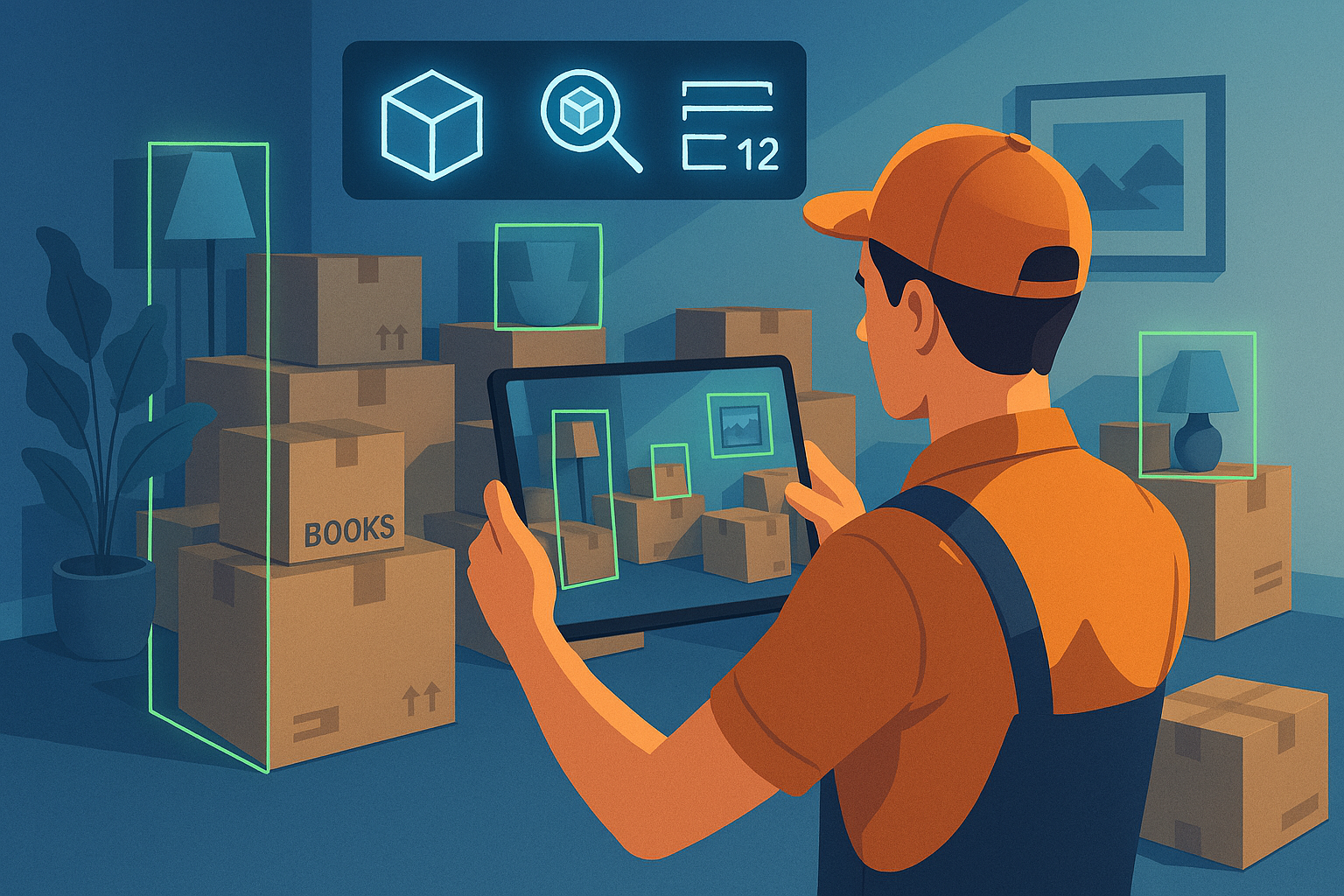Why Moving Technology in 2025 Is Making Traditional Services Obsolete
Technology has reshaped the moving industry. More than 70% of US moving companies now use tech tools like AI route planners, virtual surveys, and immediate GPS tracking.

Technology has reshaped the moving industry. More than 70% of US moving companies now use tech tools like AI route planners, virtual surveys, and immediate GPS tracking. These tools make your move quicker, safer, and less stressful. The American moving market stands at $18 billion and continues to grow.
The industry's transformation demonstrates how far we've come from relying on clipboards and manual labor. Virtual moving technology has become the preferred choice, with 73% of customers opting for virtual surveys over in-person visits. Moving technology now goes well beyond trucks and dollies. Smart devices protect your belongings throughout the journey. The moving tech industry (sometimes called moving tech or referred to by platform names like Wemove or WemovePro) continues to advance rapidly. AI now handles everything from virtual surveys to precise cost estimates.
This piece will show why traditional moving services no longer meet today's needs. You'll learn about how state-of-the-art technologies create better, clearer, and more customer-focused moving experiences. We'll also explore the hurdles companies face as they adopt these new tools and what this means for your next move.
Why Traditional Moving Services Are No Longer Enough
Traditional moving companies have mastered what consumer groups call the 'quote-and-switch' technique. They win business by offering low estimates while knowing the final cost will be much higher. A newer study, published in 2024 by Consumer Reports shows 65% of Americans who used full-service movers paid at least 25% more than their original quote. All but one of these customers paid double or more. These problems are systemic, which explains why conventional moving services don't meet today's consumer needs.
Customer expectations have changed
Today's customers don't just compare moving companies to each other. They measure them against Amazon, Uber, and Airbnb. This radical alteration has set new baseline expectations to work faster, better, and with more transparency. The priorities for customers in 2025 are:
- Online booking instead of long phone calls
- Digital paperwork instead of printing and scanning
- Clear, upfront pricing without endless negotiations
Moving companies that still use outdated processes risk losing business, even when their physical services excel. Recent surveys show 70% of respondents list budget-friendly options as their top factor when hiring movers. Customer reviews and reputation follow closely behind, demonstrating that the overall customer experience matters more than ever.
Manual processes cause delays and errors
Traditional moving services depend too much on manual processes that create inefficiencies. The most focused employees still make mistakes. One study reveals a manual transcription error rate of almost 4%. These errors multiply throughout the moving process and lead to mix-ups, delays, and frustrated customers.
Managing moving logistics by hand takes too much time. The core team often wastes valuable hours on paperwork instead of core operations. Fleet managers spend 15-20 hours weekly double-checking paperwork and fixing errors. This waste increases costs and slows down response times.
The traditional full-service moving model creates conflicts that hurt consumers. Companies need to cover high fixed costs for fleets, warehouses, and staff. This puts pressure on them to squeeze more revenue from each customer. Complex pricing makes it nearly impossible to compare services.
Lack of transparency and immediate updates
The biggest problem with traditional moving services is poor transparency. The Better Business Bureau reports U.S. consumers filed more than 13,000 complaints about moving services in 2024. Hidden fees, delivery delays, poor communication, and bait-and-switch pricing tactics top the list of issues.
Modern customers want to track their move "like they track a pizza". Without tracking capabilities, customers worry about their belongings. This becomes a vital issue during long-distance moves when delivery timing uncertainty can mess up plans for weeks.
The Federal Motor Carrier Safety Administration (FMCSA) reports more consumer complaints each year. Many cases deal with hidden fees, late deliveries, and scams. This trend leaves families and businesses vulnerable during stressful transitions. We need more transparent, tech-driven moving solutions now more than ever.
The Core Technologies Driving the Shift
Image Source: Deloitte
Five core technologies have altered the map of the moving industry and emerged as game-changers. These advancements represent fundamental changes in how moving services operate behind the scenes.
AI-powered route planning and estimates
Modern moving operations now rely on advanced AI algorithms that analyze traffic patterns, road conditions, and delivery windows to create the most efficient routes possible. Companies and clients save money through reduced fuel consumption and minimal vehicle wear and tear.
AI-driven routing helps movers manage multiple jobs across different locations, which cuts operational costs and improves service delivery. The technology does more than simple navigation—it predicts delays, adjusts routes based on immediate conditions, and calculates precise arrival times.
A Texas-based moving company that applied AI route optimization saw their accident rate drop by 4.5% in just three months, which proved both safety and efficiency benefits.
Virtual moving technology and 3D surveys
The quoting process has changed since virtual surveys arrived, with 99% of customers choosing them over in-person assessments when given the option. Moving companies now conduct complete virtual consultations through video conferencing tools without being physically present.
Companies like Yembo have developed state-of-the-art AI that can:
- Turn smartphone videos into photorealistic 3D models with virtual walkthroughs
- Extract accurate floor plans from video footage
- Measure items and structures precisely within these digital models
These 3D scans are accurate to the millimeter, which ensures every detail is documented during complex relocations. This technology also lets companies complete up to three times more surveys per person per day.
GPS tracking and real-time updates
Customers no longer worry about their belongings' location during a move. Companies monitor their entire fleet from a centralized dashboard using GPS tracking technology. This technology offers several operational advantages beyond location tracking.
GPS tracking helps prevent theft and protects valuable assets during transit. It also makes delivery routes simpler, provides exact delivery time estimates, and improves customer satisfaction.
Customers now receive automated ETA updates and alerts about route changes or unexpected delays without making frequent calls.
Smart sensors and IoT for fragile items
IoT-enabled sensors now offer unprecedented protection for sensitive items during transit. These devices track vital environmental conditions like temperature and humidity throughout the trip.
Smart sensors protect electronics, artwork, and antiques—items that can easily be damaged by environmental factors. Moving companies receive immediate alerts if conditions become unfavorable when these sensors are installed in boxes or trucks.
International relocations benefit from this technology as belongings often face various climates and handling conditions.
Digital contracts and online payments
Digital contract platforms have made the paperwork-heavy moving industry more efficient. Companies can create, send, and store agreements electronically. E-signature technology speeds up the booking process and reduces administrative costs.
Payment solutions have evolved, too. Modern systems process credit card payments right after job completion. This quick processing improves business cash flow and makes payments convenient for customers.
The digital signature market shows the importance of this trend. Projections indicate growth from $7.40 billion in 2023 to $34.80 billion by 2028—a 36% annual growth rate.
How Moving Tech Improves the Customer Experience
Modern customers want moving experiences that match the convenience they enjoy in their digital lives. Recent tech innovations help meet these expectations by improving every step of the moving trip.
Faster and more accurate quotes
The days of waiting for an estimator to visit your home are over. Virtual surveys now help moving companies provide accurate quotes in minutes instead of days. The Movegistics Mobile Survey App, for example, completes estimates in under 10 minutes, compared to the 45 minutes required with traditional cube sheets. Companies can now complete three times more surveys per person daily.
Moving company websites now feature visual estimators that let customers build their own inventory with visual aids. This self-service approach creates more accurate quotes and gives moving companies qualified leads. Most customers prefer virtual assessments - 99% choose them over in-person visits because they save time and offer more convenience.
Real-time shipment tracking
Immediate tracking has changed from a "nice-to-have" feature to a business necessity in logistics. GPS-enabled tracking systems give customers:
- Continuous updates from origin to destination
- Proactive notifications about potential delays
- The ability to monitor their belongings throughout transit
This transparency matters most for time-sensitive or fragile items. Companies can now spot and fix problems early by rerouting shipments before issues grow. Customers feel less anxious and more at peace during their stressful life transition.
24/7 support through AI chatbots
AI-powered chatbots have transformed customer service in the moving industry. These smart assistants handle initial questions, provide instant quotes based on move details, schedule appointments, and offer real-time updates. Of course, this round-the-clock availability will give customers answers whenever they need them.
Chatbots streamline response times, allowing the core team to focus on more assistance with service costs, timeframes, additional options, and quick calculations, enabling customers to make decisions more efficiently. This automation speeds up response times and lets the core team focus on complex customer service tasks.
Touchless and paperless transactions
A shift toward contactless transactions has gained momentum with the rise of virtual consultations, electronic contracts, and digital payments. The paperless system removes the need for physical signatures, makes booking easier, and cuts administrative costs.
Digital payment options make things convenient, while moving companies get paid quickly. The move to paperless processes will become standard practice since it reduces costs on paper, printing, and storage while making document management simpler.
Behind the Scenes: How Movers Are Using Tech Internally
Image Source: Commusoft
Modern moving companies rely on a complex network of technological solutions to power their operations. These companies invest heavily in sophisticated internal systems that optimize everything from fleet operations to customer data management.
Fleet and driver management systems
Driver management systems (DMS) are the foundations of modern moving operations. These systems connect vital data sources into one centralized platform. They optimize routes based on immediate data and monitor driver behavior to boost safety. Fleet managers who use these technologies report the most important improvements. Their top priorities include maintaining compliance (80%), promoting a safety culture (71%), and tracking expenses (68%).
A properly implemented fleet management system shows vehicle locations through GPS tracking. Managers receive instant alerts about any road issues. This clear visibility helps teams respond quickly to accidents or mechanical failures, which improves both responsiveness and safety.
Automated scheduling and load planning
Load planning software plays a crucial role in maximizing trailer utilization. These systems arrange freight strategically within transport assets to optimize space usage. This reduces the number of vehicles needed for the same volume of goods. Moving companies cut transportation costs by up to 25% when they calculate optimal placement patterns based on package dimensions and weight restrictions.
Inventory tracking with barcodes and RFID
RFID technology has changed how moving companies manage inventory. RFID tags send information automatically to readers without needing line-of-sight. This makes tracking faster and more accurate than traditional methods. The technology offers:
- Immediate tracking of goods in transit with pinpoint accuracy
- Automated inventory counting that reduces manual errors
- Better protection against loss or theft during transportation
Predictive maintenance for moving equipment
Moving companies employ predictive maintenance strategies through connected sensors that monitor equipment health. Machine learning algorithms analyze data to spot potential issues before breakdowns occur. Companies see real benefits from these systems. They include a 5-15% reduction in facility downtime and a 5-20% increase in labor productivity.
CRM systems for individual-specific service
Customer Relationship Management (CRM) platforms work as centralized hubs that store all client interactions and details. Moving companies use these systems to manage everything from original lead capture to job scheduling and post-move follow-up. The systems help deliver individual-specific experiences while streamlining internal operations through better scheduling, improved team communication, and targeted marketing based on customer insights.
Challenges in Moving Technology Adoption
Moving technology offers clear benefits, but companies of all sizes face major hurdles during adoption. These challenges can slow down implementation or completely derail digital transformation efforts.
High upfront costs for small movers
Small moving businesses often struggle with financial barriers when implementing new technologies. Managed IT services cost between $110 and $400 per user monthly. Small companies pay $1,200 to $2,000 each month for complete support packages. Many small movers find it hard to balance reliable IT systems with these costs. Companies that switch to managed services save 25% to 50% each year by streamlining processes.
Training staff on new systems
New technology needs more than just software installation to work. Staff often resist or barely use new systems without proper training. A study revealed that companies expect their already-busy employees to somehow find time to train. The best training methods include microlearning that breaks content into small chunks. Peer-to-peer learning lets team members create the content.
Data security and privacy concerns
Moving companies face higher privacy and security risks as they collect more customer data. Cybercriminals target transportation companies to steal valuable cargo information and proprietary data. Data-related threats make up 30% of cyber-attacks in the transport sector. Customer information protection builds trust in our increasingly digital industry.
Resistance to change within teams
Employee resistance remains the biggest obstacle to technology adoption. About 70% of change programs miss their goals because employees resist change. This pushback comes from job loss fears, poor communication about change reasons, management trust issues, and concerns about disrupted work patterns.
Integration with legacy systems
10-year-old moving companies face technical hurdles when connecting new technologies with existing systems. Retailers spend 58% of their IT budget to maintain legacy systems. Many businesses stick with outdated technology because new core systems cost too much. The path to success requires careful assessment of which infrastructure parts need upgrades and which ones are too old.
So What's Next
The moving industry is poised for a turning point in 2025. Traditional moving services, which once dominated the market, now risk becoming obsolete as technology reshapes what customers expect and how operations are conducted. In this piece, we've explored how AI-powered solutions, virtual surveys, up-to-the-minute data analysis, and digital documentation solve long-standing industry problems and create new standards to optimize and improve transparency.
Companies that welcome these technological changes get huge competitive advantages. Smart movers now complete three times more surveys daily, cut fleet costs by up to 25%, and deliver better customer experiences by a lot. Tech-enabled moving companies keep widening their lead over traditional services each year.
Small moving businesses struggle with adopting new technologies. Upfront costs, staff training needs, and complex integrations create ground obstacles. Notwithstanding that, avoiding action costs more than implementation as tech-savvy competitors grab market share.
Customers reap the biggest rewards from this tech revolution. They can track their belongings just like tracking a pizza delivery. Accurate quotes, clear pricing, and instant updates replace the stress and uncertainty that used to define moving day.
Tomorrow belongs to companies that see technology as essential rather than optional. Those slow to adapt might join video rental stores and travel agencies—businesses that failed to progress when digital alternatives showed up.
Your next move will show this gap clearly. You'll pick between companies that use AI-driven efficiency and those stuck with clipboards and guesswork. This choice matters because moving stays one of life's most stressful events, though technology now helps reduce that stress by a lot.
The $23 billion American moving industry is constantly evolving. Companies investing in moving technology today set themselves up for success tomorrow, while those hanging onto old methods face a tough road ahead. The industry hasn't finished changing, but its path looks clear—moving technology has forever changed what customers expect, how companies operate, and service quality standards.
FAQs
Q1. How has technology changed the moving industry in recent years? Technology has revolutionized the moving industry by introducing AI-powered route planning, virtual surveys, real-time GPS tracking, and digital contracts. These advancements have made moves faster, more efficient, and more transparent for customers.
Q2. What are the benefits of using a tech-enabled moving company? Tech-enabled moving companies offer faster and more accurate quotes, real-time shipment tracking, 24/7 support through AI chatbots, and touchless transactions. These features provide customers with a more convenient, transparent, and stress-free moving experience.
Q3. Are virtual surveys as accurate as in-person assessments? Yes, virtual surveys have become highly accurate thanks to advanced AI and 3D modeling technology. They can provide millimeter-level accuracy and allow moving companies to complete up to three times more surveys per day compared to traditional methods.
Q4. How does GPS tracking improve the moving process? GPS tracking allows customers to monitor their belongings in real-time throughout the move. It also helps moving companies optimize routes, provide precise delivery estimates, and quickly respond to any issues that may arise during transit.
Q5. What challenges do moving companies face when adopting new technologies? Moving companies, especially smaller ones, face challenges such as high upfront costs, the need for staff training, data security concerns, resistance to change within teams, and difficulties integrating new systems with existing legacy infrastructure.

